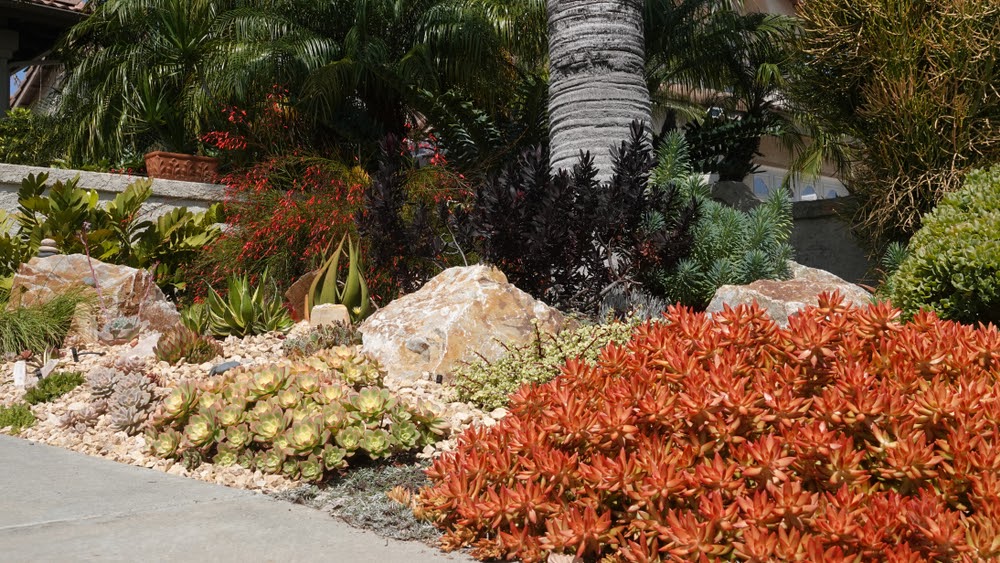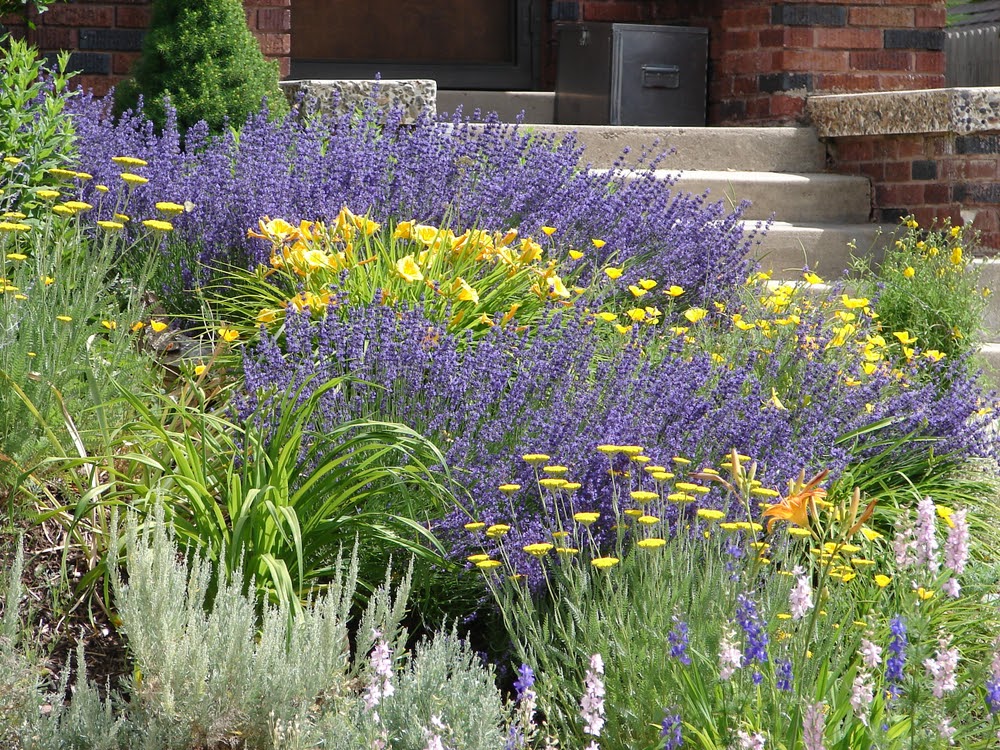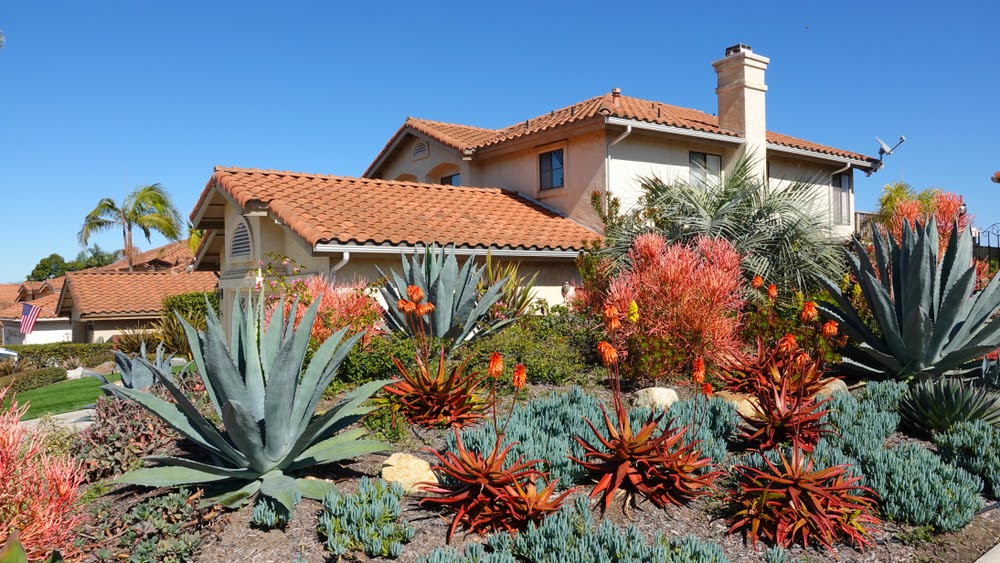Xeriscape Landscaping: What is Xeriscaping?

If you’ve considered redoing your landscaping, you’ve probably come across the term xeriscaping. It’s a complicated word, but the concept behind it is pretty simple: xeros is a Greek root that just means dry. So, xeriscaping is a form of dry-plant landscaping. That usually means cacti, succulents, or Mediterranean plants like olive and lavender.
Why would someone opt for dry-climate plants over other, more lush traditional options? There are tons of benefits to xeriscaping that are worth considering. In this post, we’ll walk you through what xeriscaping is, how much it costs, what plants people choose, and some of its many benefits.
We’ll start by answering a simple question that many people have when they first hear about drought-tolerant landscaping options: what is xeriscaping?
What is xeriscape landscaping?
Xeriscape landscaping is the practice of designing your home garden or yard with drought-resistant plants. In most cases, this makes sense in drier climates, such as the American Southwest — Southern California, Arizona, Nevada, New Mexico, Texas, and Utah. These places receive lower annual rainfall than other parts of the country, so many eco-minded landscapers advocate for landscaping that reflects this.
Note: When hearing the word xeriscape (pronounced zeh-ri-skeip), people often confuse the term, and believe it to be zero-scape. This is because xeriscaped gardens can appear minimalist if that’s what the homeowner or landscaper chooses. However, this is a common misconception: as noted above, xeros comes from the Greek word for arid or dry. And xeriscaped landscapes can be anywhere from dry desert scenes to lush Mediterranean gardens.
While popular landscaping trends from rainier parts of the country are still dominant in many parts of the Southwest (as well as other arid parts of the world), there has been a recent shift in interest toward xeriscaping. As people become more environmentally conscious, they also begin to appreciate the natural beauty that a garden full of cacti, succulents, and drought-resistant trees can offer.
Knowing how to xeriscape offers a number of benefits:
- Water conservation: Dry-climate plants need less water, which is great for the planet, and great for your water bill.
- Low cost: Many dry-climate plants are inexpensive to purchase, but the biggest benefit is that they are also cheap to maintain due to low water requirements.
- Low maintenance: If you’re trying to keep ivy, fir trees, and rose bushes alive in Phoenix or San Diego, you’re going to need a lot of water and professional care. Xeriscape gardens are naturally suited to those environments, making your yard much easier to maintain.
- Natural beauty: Lavender, succulents, century plants, jacarandas, olive trees, saguaros — they’re all eye-catching! Plenty of xeriscape-friendly plants are still leafy and green, too, so you don’t have to sacrifice beauty when opting for a dry-climate garden.
As we mentioned, xeriscaping can actually contribute to long-term cost savings. For more information, be sure to check out our guide on how to create an eco-friendly backyard.
How much does it cost to xeriscape a yard?
Costs can vary significantly depending on the size of your yard or garden, where you live, the plants you choose, the company you work with, and how much alteration is necessary to complete a xeriscape transition.
Generally, any major landscaping project will cost several thousand dollars to complete, including xeriscaping. Of course, depending on your specific project, it may cost significantly more or significantly less; it really comes down to how much work you need to put into your lawn to complete a xeriscape.
On the upside, however, Energy.gov estimates that well-designed landscaping can actually pay for itself in as little as eight years. This is due to a combination of lower water requirements, less maintenance, and, in some places, municipal rebate programs to help incentivize homeowners. Plus, did you know that you can actually cool your home with strategic landscaping? Tall trees and other plants that provide shade can go a long way toward reducing your air conditioning bill.
Xeriscaping can also result in time savings, as many dry-climate plants require less upkeep. For instance, replacing a lawn with succulents or bunches of grasses means you no longer have to mow the lawn. And many arid-region-friendly trees are not deciduous, so they won’t drop leaves that need to be raked in the fall.

What plants are good for xeriscape landscaping?
When people imagine a xeriscaped yard, they often think of a desert-looking scene: sand, large rocks, and a few cacti. While that’s certainly an option — and can look quite stunning when done well — you’re by no means restricted to cacti and rocks when cultivating a xeriscaped lawn.
Here are a few different categories that you have to work with when completing your xeriscaped home makeover:
- Groundcover: Groundcover typically replaces grass. For instance, instead of having a lawn, you might have a natural-looking scene that included a couple of taller plants or trees, and groundcover, including:
- Arid-region ornamental grasses
- Low-lying succulents
- Small flowers, like Spanish daisy
- Woodchips, bark, sand, or gravel
- Synthetic grass (a good option for families with kids or pets)
- Flowers and herbs: No garden looks quite radiant enough without beautiful blooming flowers. Luckily, there are tons of drought-resistant flowers you can use to bring joy to your garden, including:
- Lavender
- Marjoram
- Bee balm
- Rosemary
- Lantana
- Yarrow
- Russian sage
- Meadow sage
- Western sunflowers
- Trees: For larger yards or for homeowners looking to create a little shade, there’s no better option than having one or even a few trees. And, yes, trees can be drought-tolerant too! Some trees to consider for xeriscaping include:
- California sycamore
- Jacaranda
- Olive tree
- Coast live oak
- Tipu tree
- Peruvian pepper tree
- Cottonwood tree
- Palm tree
- Plants: Great additions to set the scene, leafy plants can make your xeriscaped yard look like a blissful getaway. Here are a few plants you can integrate into your xeriscaping project:
- Succulents
- Cacti
- Aloe
- Artemisia
- Fountaingrass
- Sweet potato vine
Of course, there are hundreds of other options out there too. From longer grasses that make great additions to the edges of your yard to small potted succulents that can add a splash of color and texture, there are thousands of different ways that you can use drought-tolerant plants to make an enchanting landscape.
Whether you opt for a Mediterranean garden, a Southwestern desertscape, a minimalist rock garden, or some combination of all those things, it’s easy to increase curb appeal (and potentially boost your property value) by crafting a gorgeous xeriscaped garden.
That’s not where the benefits end, though.
Does xeriscape landscaping help conserve water?
Yes, xeriscaping can conserve a lot of water. The benefit that xeriscaping is best well-known for is its ability to save homeowners money on their water bills — and help conserve our planet’s precious and dwindling water resources. In fact, one estimate in a city in California found that xeriscaping conserved up to 120 gallons of water per day. This is especially true in places with lower rainfall.
For instance, cities like San Diego, Los Angeles, Phoenix, Las Vegas, Albuquerque, and El Paso all have low rainfall compared to many similarly-sized urban centers in other parts of the U.S. Having a full-grass lawn, large deciduous trees, and hedges, for example, can waste thousands of gallons of water per year in such climates.
Instead, by choosing drought-tolerant plants, homeowners can save thousands of dollars in the long-term, as they won’t have to pump gallons of water into the yard just to keep it alive. And, as water resources run dangerously low in many parts of the Western U.S., having a xeriscaped garden can go a long way toward doing your part to reduce water waste.

Xeriscaping and beyond
Xeriscaping is a great way to do your part to protect the environment while saving money and having a beautifully designed front yard, back yard, or garden. And, contrary to popular belief, there are tons of stunning and creative ways to create a xeriscape landscape for your home — you’re not just restricted to rocks and cacti. Plus, xeriscaping includes benefits like saving water, saving money, cutting down on maintenance, and even helping to naturally keep your home cool.
However, knowing how to xeriscape your yard isn’t the only way that you can do your part to help the environment at home; be sure to check out our guides to other eco-friendly home-improvement projects:
- How to fireproof your home
- Saving money with energy-efficient light bulbs
- Home solar battery guide
- 27 energy efficiency and conservation tips
Did you know that PACE financing can also be used toward landscaping projects? Read our guide to PACE financing to learn more about how you might qualify for financing when opting for a xeriscaped yard or garden.




